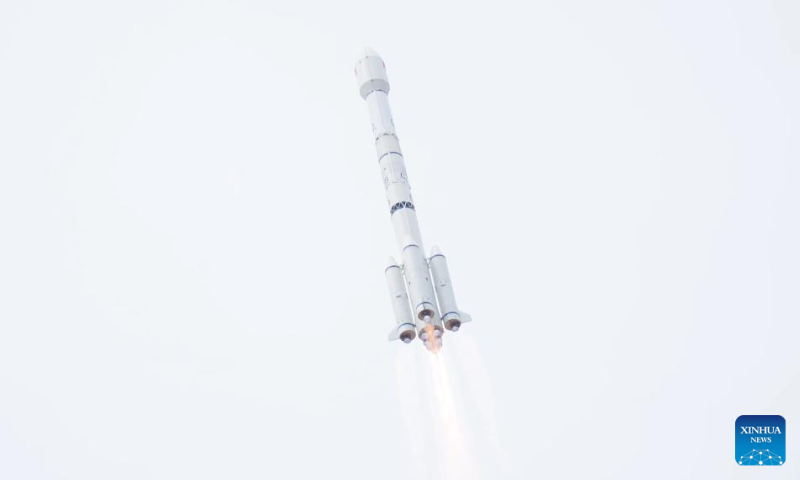MIIT grants Tsinghua University licenses to conduct technical verification of medium-orbit wideband communication satellite synchronization

A Long March-3B carrier rocket carrying the Smart SkyNet-1 01 satellite blasts off from the Xichang Satellite Launch Center in Southwest China's Sichuan Province, May 9, 2024. Photo: Xinhua
China's Ministry of Industry and Information Technology (MIIT) issued a wireless frequency license and a space radio station license to Tsinghua University for the Smart SkyNet-1 01 satellite on Friday, enabling the university to conduct technical verification of medium-orbit wideband communication satellite synchronization.
The Smart SkyNet-1 01 satellite, China's first medium-orbit wideband communication test satellite, uses multiple radio frequency bands. The experimental communication satellite was transported into a medium-Earth orbit about 20,000 kilometers above the ground by a Long March 3B carrier rocket on Thursday morning, according to media reports.
The MIIT has coordinated the relevant frequencies and issued licenses to Tsinghua University, supporting the university in conducting various new technology validations such as direct connection of research data between domestic and Antarctic research stations and data transmission between medium, high, and low orbit satellites.
The satellite is an original solution proposed by Tsinghua University for a medium-orbit geostationary orbit network, consisting of eight medium-orbit wideband communication satellites deployed in a 20,000-kilometer orbit. It forms a global communication constellation and can be expanded to include 16 or 32 satellites for extended coverage.
Moving forward, the MIIT will prioritize the advancement of the satellite industry and technology, directing satellite operating entities to utilize radio frequencies judiciously, facilitate effective frequency coordination, and ensure the fulfillment of frequency utilization requirements for the satellite network, according to media reports.
Amid China's ongoing push for new quality productive forces, the aerospace sector is a beacon of the country's innovative prowess and a catalyst for economic advancement, industrial observers said.
China's aerospace sector has experienced significant growth and remarkable achievements in recent years. On March 3, China launched its Chang'e-6 lunar probe in the world's first-ever attempt to bring back lunar samples from the far side of the Moon, marking another historic stride in its deep space endeavors.
Zhao Zhiguo, chief engineer at the MIIT, said on April 28 that in the future, the ministry would focus on promoting new industrialization, prioritizing the construction of a manufacturing powerhouse to facilitate China's modernization, and actively cultivating new growth points in biomanufacturing, commercial aerospace, and the low-altitude economy.
Photos
Related Stories
- Across China: University collaboration boosts NE China's industrial development
- China’s Chang'e-6 lunar probe enters circumlunar orbit after near-moon braking
- China launches new satellite
- China delivers Chang'e-6 mission cube satellite data to Pakistan
- Pakistan-China lunar collaboration fuels excitement for future research in Pakistan: official
- China encourages use of BeiDou position system in electric bicycles
Copyright © 2024 People's Daily Online. All Rights Reserved.









